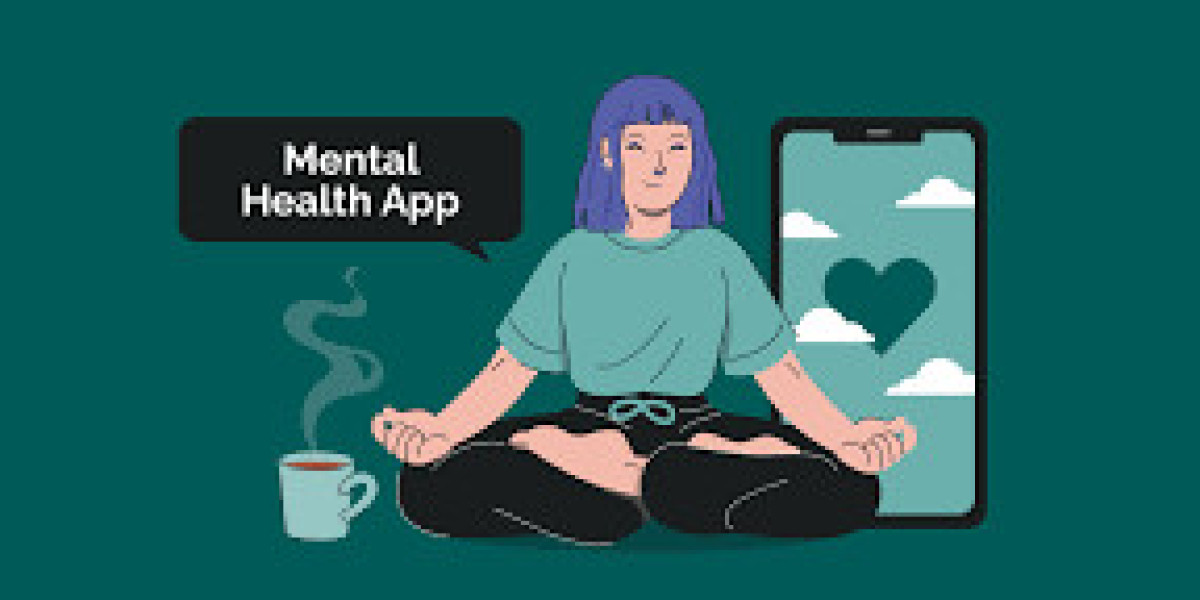? Mental Health App Development: A Guide to Building Compassionate Tech
In today's fast-paced digital world, mental health has become a pressing concern. As awareness grows, so does the demand for accessible and supportive tools—especially mobile apps. Mental health app development have emerged as powerful allies, helping people manage stress, anxiety, depression, and other mental health challenges from the comfort of their phones. But developing an app in this space isn’t just about coding—it’s about empathy, privacy, and evidence-based design.
This blog explores what it takes to develop a successful mental health app—from essential features to compliance, design principles, and best practices.
? Why Build a Mental Health App?
The global mental health market is expected to grow significantly, with millions turning to mobile apps for therapy, mindfulness, and emotional support. Apps like Headspace, Calm, and BetterHelp have demonstrated that well-designed solutions can scale access to care and reduce stigma.
Key Benefits of Mental Health Apps:
24/7 accessibility
Reduced costs vs. traditional therapy
Anonymity for users
Scalable support for underserved populations
Personalized tracking and self-care tools
?️ Core Features of Mental Health Apps
When designing a mental health app, focus on creating a safe, engaging, and effective environment for users. Here are some must-have features:
1. Self-assessment Tools
Mood tracking
Anxiety or depression scales
Journaling and reflection prompts
2. Guided Therapy & Exercises
CBT-based techniques
Breathing and relaxation guides
Meditation and mindfulness sessions
3. AI Chatbots or Human Counseling
Chatbots for basic support and check-ins
Integration with licensed therapists for live sessions
4. Reminders & Notifications
Daily mental health tips
Routine-building prompts
5. Progress Tracking
Visual dashboards to show improvements or patterns
6. Community Support
Forums or peer support chat (moderated for safety)
? Privacy and Compliance Considerations
Mental health apps deal with deeply personal data, so privacy must be a top priority.
Legal & Ethical Standards:
HIPAA (U.S.)
GDPR (Europe)
PIPEDA (Canada)
Best Practices:
Use secure authentication (2FA)
Store data with encryption
Allow data export and deletion
Be transparent in terms and privacy policies
? Designing with Empathy
Good UI/UX design in a mental health app goes beyond aesthetics—it fosters trust, safety, and engagement.
Design Principles:
Calm color palettes (soft blues, greens)
Minimal clutter to reduce cognitive load
Easy navigation
Inclusive and diverse content
Accessible to users with disabilities (WCAG compliance)
? Technologies and Tools
Depending on the app type and target audience, here’s a tech stack to consider:
Frontend: Flutter, React Native, Swift (iOS), Kotlin (Android)
Backend: Node.js, Firebase, Django, Ruby on Rails
AI & NLP: OpenAI, Google Dialogflow, IBM Watson
Analytics: Mixpanel, Amplitude, Google Firebase
Security: OAuth 2.0, HTTPS, AES encryption
? Monetization Models
Monetizing mental health apps should be done with care. Here are ethical models:
Freemium: Basic access for free; premium for extra features
Subscription: Monthly/yearly plans
Donations or Grants: Especially for nonprofit models
In-App Purchases: For additional content (journals, exercises)
Avoid aggressive upselling or restricting critical features behind paywalls.
? Validating and Testing the App
Testing a mental health app involves more than just bug fixing. It requires ensuring clinical effectiveness and user safety.
Beta testing with real users and mental health professionals
Surveys and interviews to gather emotional feedback
A/B testing features for usability improvements
Clinical partnerships for credibility and insights
? Examples of Successful Mental Health Apps
Calm – mindfulness, meditation, sleep stories
Talkspace – therapy with licensed professionals
Moodpath (now MindDoc) – mood tracking and guided insights
Sanvello – CBT-based support with journaling and community





